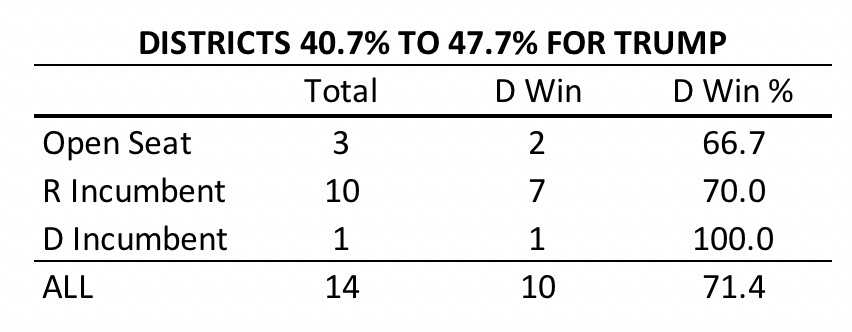All 100 seats in the Virginia House were up for election in 2017. Looking at the results can give an idea of what might happen in Maryland’s state legislative elections later this year. Using a statistical technique known as logit, I created models to estimate the impact of various factors on the probability of a Democratic victory.
Analysis of the election results indicates, unsurprisingly, that the 2016 results are an extremely powerful predictor of which party won Virginia House seats. Adding other demographic factors to statistical models had little impact.
Looking at the raw results reveals why. In 2016, Clinton beat Trump by 49.7% to 44.4% with 5.9% going to other candidates. Virginia was gerrymandered for the Republicans, so it has a disproportionate share of Trump-leaning seats even taking into account the concentration of Democrats in urban areas.
Republicans won all 47 seats in Virginia where Trump won more than 48.0% of the vote. Clinton won 46.0% or less in these districts.
Democrats won all of the 39 seats where Trump won less than 40.5% of the vote. Clinton received at least 54.0% in these districts. These 39 districts include four Democratic pickups.
That leaves 14 districts where Trump won between 40.5% and 48.0% of the vote. Incumbency didn’t do a lot for Republicans according to either the statistical model or a look at the raw numbers. As the following table reveals, Democrats won roughly the same share of seats with Republicans seeking reelection as open seats.
The sole Democratic incumbent also won reelection. Indeed, no Democrat lost in 2017 but all represented districts that Clinton won with at least 56.0% and Trump received 41.0% or less. Overall, Democrats won 10 of the 14 seats in marginal range. It would have been eleven had the drawing in the tie race gone the other way.
Next up, what do the Virginia results indicate for Maryland Senate races?

